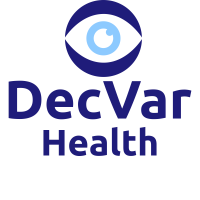A well-designed website is essential for healthcare organizations. It creates a positive first impression, instills trust and confidence, and increases patient engagement.
Interactive features like online appointment scheduling and secure messaging systems improve efficiency and save time. Medical videos and blogs help patients better understand their health conditions and treatment options.

Visually Appealing
Web design is a critical component of healthcare marketing and patient engagement strategies. Its goal is to create visually appealing, user-friendly websites that communicate a healthcare organization’s values, expertise, and services to patients and other stakeholders.
Unlock the power of patient engagement with expert healthcare website design. Elevate your healthcare practice by providing valuable information, building trust, and offering convenient online services like appointment scheduling and secure messaging platforms
In addition to these features, a medical website should feature pictures of people rather than corporate stock photos. This personal touch helps to foster a sense of trust and ease for users who are likely feeling stressed and anxious.
A professional design is essential for hospitals and medical practices to attract new patients and build ongoing relationships with existing ones. Research shows that users’ attention spans are limited to less than 19 seconds, so it’s important for healthcare sites to make a strong impression and keep users engaged. This can be accomplished through an attractive, modern design and a clean, uncluttered layout.
Easy to Access
It is crucial for web design to prioritize accessibility across all devices, including laptops, tablets, and smartphones. Effective web design Seattle ensures seamless user experiences by employing clear fonts, optimizing images for smaller screens, and implementing responsive forms. By partnering with expert web designers in Seattle, healthcare providers can guarantee that their online platforms meet the diverse needs of patients and clients, fostering trust and engagement within the local community
A well-designed website allows patients to navigate information easily, making it easier to find what they are looking for and increasing engagement. This can be achieved by providing an easy-to-read layout, incorporating video tutorials and FAQs sections, and ensuring that all pages have a consistent design.
Patient portals encourage patient involvement by giving them control over their own health, allowing them to schedule appointments and request prescription refills online. They can also communicate with their doctor and other staff members through messaging or secure file sharing. This helps reduce the administrative workload and improves communication between all team members. It also increases productivity and saves time, money and resources for hospitals. This is one of the most effective ways to engage patients.

Interactive Features
Patient engagement is a crucial element of healthcare marketing. Studies have shown that engaged patients are more likely to follow physician recommendations, take their medications as prescribed, and modify long-term behaviors that could improve health outcomes. These improvements can reduce healthcare costs.
The most effective way to engage patients is by making their experience meaningful. Interactive features are one of the most effective ways to do this. These include a patient portal that allows patients to schedule or cancel appointments online, appointment reminders that increase total appointment management efficiency and reduce no-show rates, and a variety of other tools that can make the process of interacting with a medical practice easier for the patient.
Another effective strategy for engaging patients is through two-way communication, which can be achieved with the use of digital patient engagement solutions that incorporate chatbot interactions and multilingual functionality. This can help bridge knowledge gaps that might otherwise prevent patients from completing tasks like refilling medication, scheduling an appointment, or getting clarification on care-plan prep and follow up. These can also be used to automate communications with patients, such as text message reminders, reducing the burden on PSRs and nurses.
Affordable
Patients want to feel empowered when it comes to their healthcare. Providing them with useful information through their website can help increase their engagement rates and lead to better health outcomes.
One way to do this is by implementing interactive tools such as online appointment scheduling and symptom checkers. Another is through emotional storytelling, which has shown to build empathy and connection with the audience.
It’s also important to keep in mind that some patients may have unique needs, such as visual impairments or limitations with dexterity and motor skills. A website should be accessible for these types of patients by using clear typography and ensuring that there is sufficient contrast between text color and background.
These tips are vital to improving patient engagement in healthcare. By incorporating best practices and strategies into your web design, you can provide an exceptional digital experience for both new and existing patients. This will ensure that your patients are happy and satisfied with your services. In addition, it can improve the overall quality of care. This includes reducing frustrations, which can have a negative impact on the outcome of a treatment plan.
Easy to Navigate
When people visit a website, they want to be able to navigate through it easily. This means that the content should be organized into logical categories and not use complicated words and phrases. Also, the site must be responsive and adapt to different devices.
A good website design should also make it easy for patients to access their personal health information. This can be done by including a patient portal, which allows them to view their medical records and schedule appointments. Patients should also be able to find in-network doctors and specialists through the website. Additionally, patients should be able to find online pricing information for procedures and services.
Patients also need to be able to communicate with nurses through the website or mobile app. This is important for ensuring that their concerns are addressed in a timely manner and that they have access to the information they need. In addition, patients should be able to ask questions through a two-way chat feature and receive clear instructions about care and treatment. These features can help improve HCAHPS scores in the Staff Responsiveness, Understood, Cleanliness, Nurse Communication, and Communication About Medicines domains.




